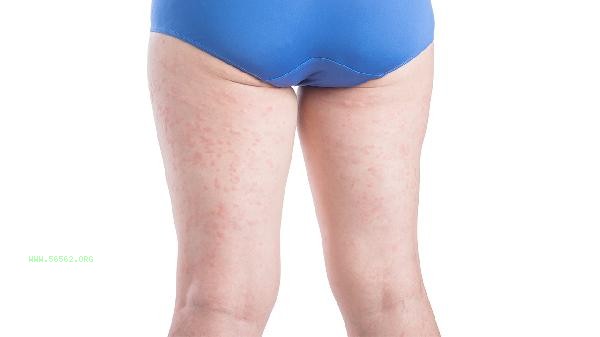Thigh muscle pain may be caused by excessive exercise, muscle strains, lactate accumulation, poor blood circulation, or disease factors. It can be improved through rest, cold and hot compress, massage, medication, and medical examination.

1. Over exercise
Long term high-intensity exercise may lead to micro damage to thigh muscle fibers, causing soreness. Commonly seen after lower limb exertion movements such as running and squats. It is recommended to stretch sufficiently before exercise, control the intensity of exercise, and replenish water and protein in a timely manner after exercise to help repair.
2. Muscle Strain
Sudden exertion or improper posture may cause muscle strain, manifested as local pain and restricted movement. Mild strains can be recovered through braking rest, and in severe cases, elastic bandages are needed to fix and avoid weight-bearing activities. Cold compress should be applied within 48 hours to reduce swelling.
3. Lactic acid accumulation
The lack of timely metabolism of lactic acid produced by anaerobic exercise can stimulate nerve endings and cause soreness. Metabolism can be promoted through low-intensity aerobic exercise, such as slow walking or swimming, combined with warm water baths to accelerate lactate breakdown, which usually resolves on its own within 2-3 days.

4. Poor blood circulation
Prolonged sitting or exposure to cold can lead to insufficient blood supply to the thigh muscles, resulting in stiffness and soreness. It is recommended to exercise for 5 minutes every hour to improve circulation, raise the lower limbs during sleep, and use blood activating and stasis removing drugs such as Sanqi tablets if necessary, but follow medical advice.
5. Disease factors
Lumbar disc herniation, varicose veins, or rheumatic diseases may radiate to the thighs, causing pain. If accompanied by numbness, fever, or continuous aggravation, medical examination is necessary. Commonly used drugs in clinical practice, such as ibuprofen sustained-release capsules and mecobalamin tablets, are used for symptomatic treatment, but self medication is not allowed.

Daily attention should be paid to fully warming up and stretching before and after exercise to avoid sudden increases in exercise volume. Sedentary individuals can practice lifting their legs and hooking their feet to promote reflux, and use pillows to elevate their lower limbs during sleep. Eating more magnesium containing foods such as bananas and nuts can relieve muscle spasms. If the pain persists for more than a week or worsens at night, timely electromyography and other examinations should be performed. Middle aged and elderly patients should be alert to the possibility of osteoporosis or vascular disease, and it is recommended to undergo regular bone density testing and lower limb vascular ultrasound screening.








Comments (0)
Leave a Comment
No comments yet
Be the first to share your thoughts!